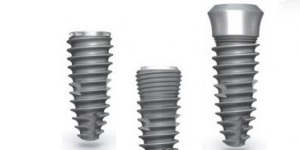
Osteoporosis and oral bone loss
2015-11-16
ایمپلنت های دندانی برای چه کسانی مؤثر است؟
2015-11-17which the bones become less dense and more likely to fracture. This disease can affect any bone in the body, although the bones in the hip, spine, and wrist are affected most often. In the United States more than 53 million people either already have osteoporosis or are at high risk due to low bone mass
Research suggests a link between osteoporosis and bone loss in the jaw. The bone in the jaw supports and anchors the teeth. When the jawbone becomes less dense, tooth loss can occur, a common occurrence in older adults
Skeletal Bone Density and Dental Concerns
Periodontal Disease and Bone Health
Role of the Dentist and Dental X Rays
Effects of Osteoporosis Treatments on Oral Health
Taking Steps for Healthy Bones
Resources
For Your Information
Skeletal Bone Density and Dental Concerns
The portion of the jawbone that supports our teeth is known as the alveolar process. Several studies have found a link between the loss of alveolar bone and an increase in loose teeth (tooth mobility) and tooth loss. Women with osteoporosis are three times more likely to experience tooth loss than those who do not have the disease
Low bone density in the jaw can result in other dental problems as well. For example, older women with osteoporosis may be more likely to have difficulty with loose or ill-fitting dentures and may have less optimal outcomes from oral surgical procedures
Periodontal Disease and Bone Health
Periodontitis is a chronic infection that affects the gums and the bones that support the teeth. Bacteria and the body’s own immune system break down the bone and connective tissue that hold teeth in place. Teeth may eventually become loose, fall out, or have to be removed
Although tooth loss is a well-documented consequence of periodontitis, the relationship between periodontitis and skeletal bone density is less clear. Some studies have found a strong and direct relationship among bone loss, periodontitis, and tooth loss. It is possible that the loss of alveolar bone mineral density leaves bone more susceptible to periodontal bacteria, increasing the risk for periodontitis and tooth loss
reference
www.niams.nih.gov
related content






